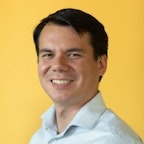Smart Building Systems

About this course
Explore how smart technologies are revolutionizing building envelopes and plug loads through innovations like automated window tinting, thermal energy storage, and intelligent receptacle management. This professional development opportunity provides the technical foundation needed to implement, manage, and optimize smart building systems that enhance operational efficiency, occupant comfort, and energy performance in today's interconnected building environments.
Learning Objectives
- Discuss basic HVAC equipment and system types
- Describe the control systems for these equipment and system types
- Explain a simple HVAC control logic
- Introduce modern smart packaged controls
- Know why an economizer saves energy and how multiple control loops form an economizer sequence
- Name typical control sequences for more complicated equipment and systems
- Know the components of a Building Automation System (BAS)
- Highlight trends in modern building automation system
This course is included in this bundle
Course outline
Module 1 • 2 assignments
Basic HVAC Systems
Module 2 • 2 assignments
Building HVAC - complex systems, Building Automation System
Module 3 • 2 assignments
Networked lighting controls and HVAC integration
Module 4 • 2 assignments
Solar PV, BESS, and EV charging
Module 5 • 2 assignments
Smart window, automated shades, thermal energy storage, phase change material, and plug loads
Conclusion • 2 assignments
Feedback and Additional Resources
Authors
Slipstream creates, tests, delivers, and scales the next generation of energy efficiency and renewable energy programs that move us farther, faster toward a clean energy economy. Slipstream partners with utilities, local and state governments, regulatory agencies and other organizations to inspire new solutions to big energy challenges. With decades of experience...

Kevin Frost, PE
Kevin Frost brings his experience in designing heating and cooling systems and HVAC controls programming to Slipstream’s Research and Innovation team. He advises Slipstream’s building consulting clients on how to ascertain their energy and sustainability goals and how best to achieve those goals. He recommends energy efficiency measures and builds energy models for the...

Scott Schuetter, PE
Scott Schuetter is a Principal Engineer at Slipstream with 13 years' experience leading research projects that focus on emerging technology performance in the built environment. His commercial building experience encompasses field measurement and modeling of emerging technology performance for energy efficiency, electrification, load shift, load shed and continuous...

Joe Zhou, PhD, PE, CEM
Xiaohui “Joe” Zhou is a Director of Research and Innovation at Slipstream, headquartered in Madison, WI. Joe has 30+ years of experience in commercial building controls and his current areas of research focus on emerging technology field testing and verification. Before joining Slipstream, he worked for several organizations, including Iowa Energy Center and Johnson...
Rob Kline, PE, MBA
Rob Kline is a Professional Engineer who has led renewable energy product development startups, providing engineering leadership and subject matter expertise, creating and managing technical writing organizations, and leading product and project management end-to-end lifecycles. Rob earned a bachelor’s degree in electrical and computer engineering from UW-Madison. He is...
